Fresh Mulch And A Plant Tour
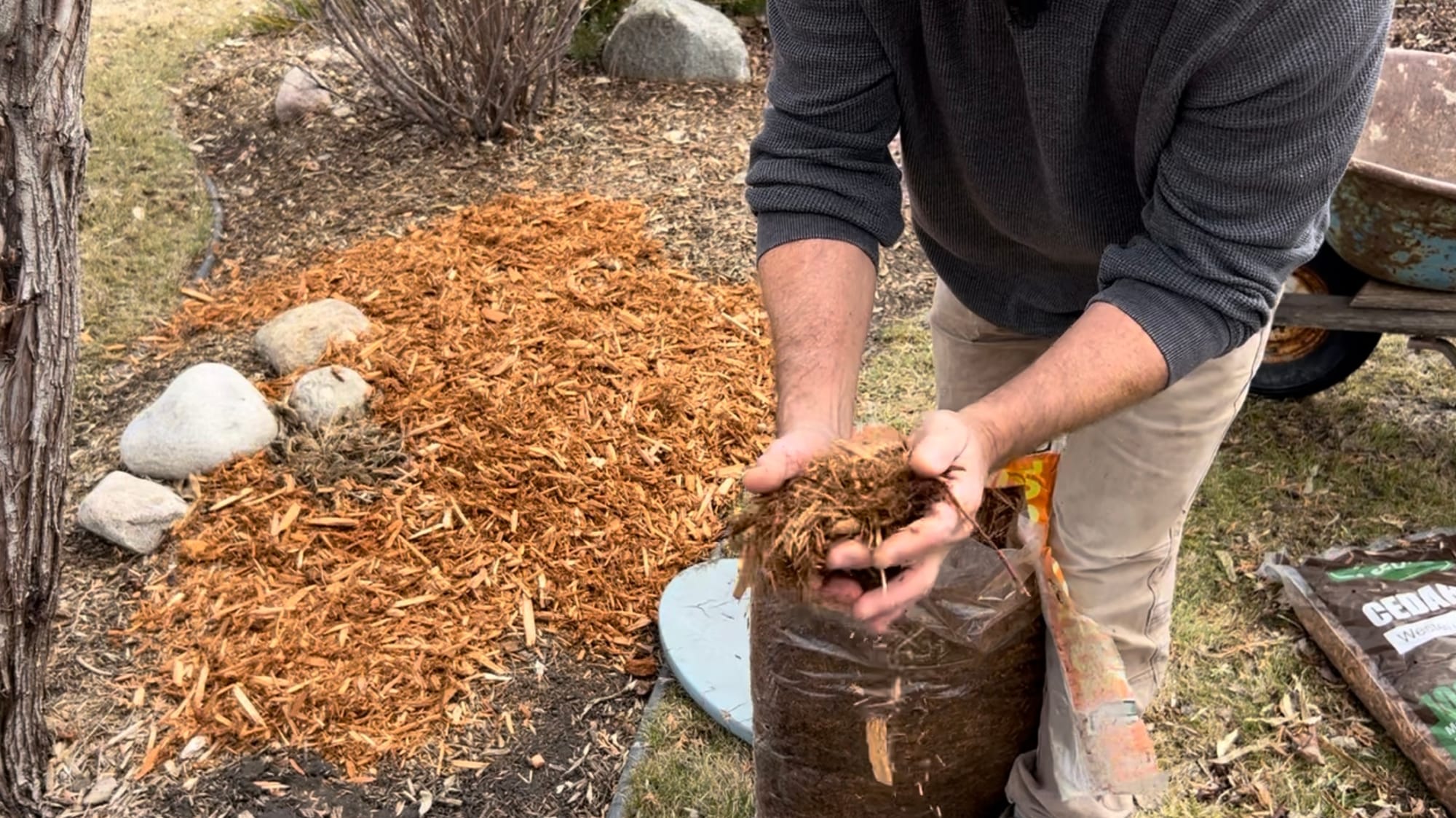
What a difference fresh mulch makes in the spring. Besides watching the grass green up and trees budding out, adding fresh mulch to my ornamental garden beds is always a favorite. The uniform bright golden color makes the landscape look brand new!
The video here shows the mulching process on one of my garden beds and a quick look at ten plant varieties.
My personal favorite for our gardens is Western Red Cedar. It is readily available in my area, reasonably priced, breaks down slowly, and has a nice golden color. Unfortunately, it starts to fade into a dull grey color within about six weeks.
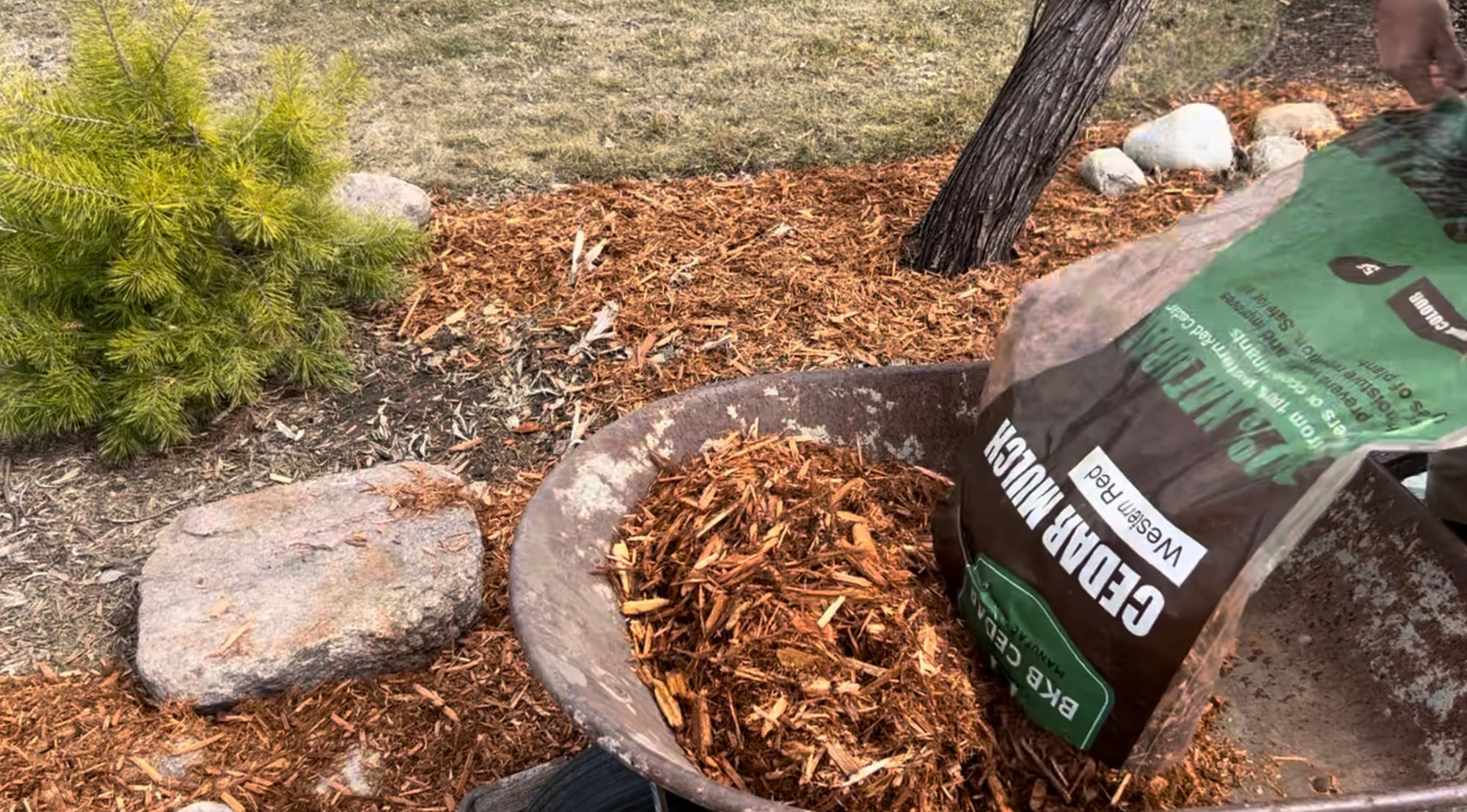

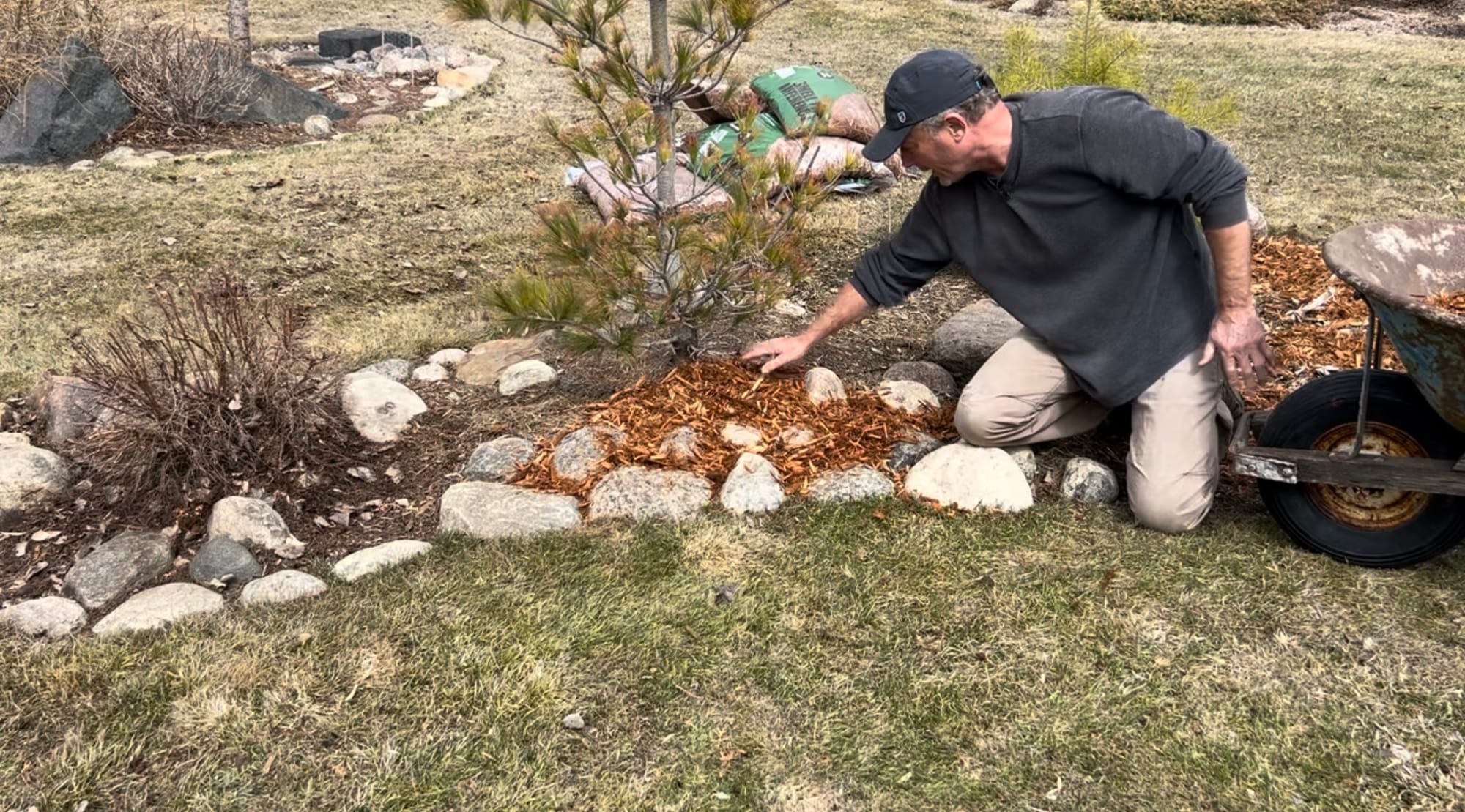
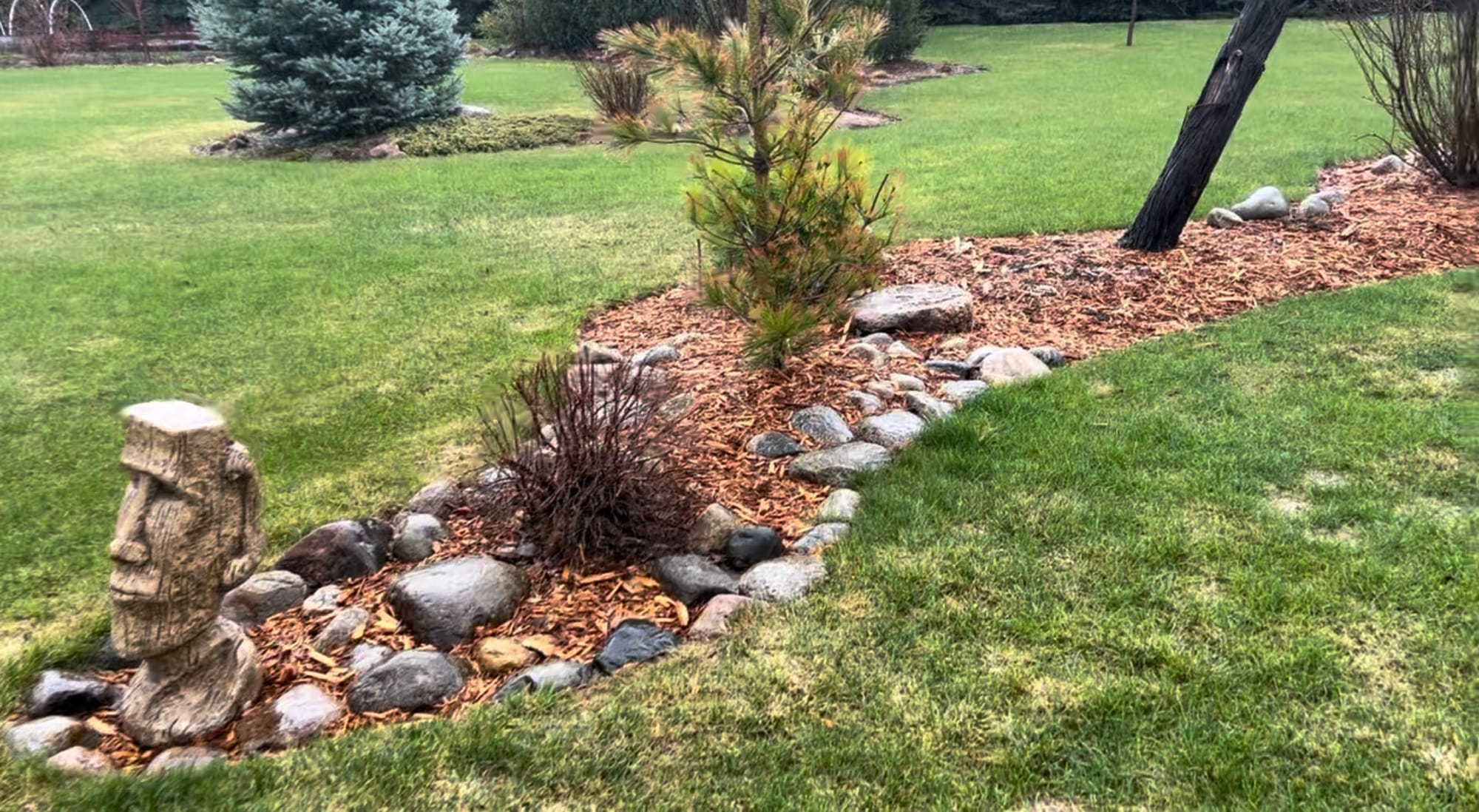
Cypress mulch is another excellent choice for good coloring, but it is about twice as expensive where I live in the northern Great Plains.
Since we can have strong winds, I prefer mulches that are more shredded in nature than chipped. The shredding helps the mulch bind together and is less apt to blow out of the beds. The shredded mulches are not perfect for windy areas, but they are better than chips and significantly better than the dyed mulches.
I'm not a big fan of dyed mulches, usually found in red, brown, and black colors. They are made by chipping old pallets or other scrap wood. The chips are very light and quickly become messy in windy areas. They also have the potential to float away in heavy rains.
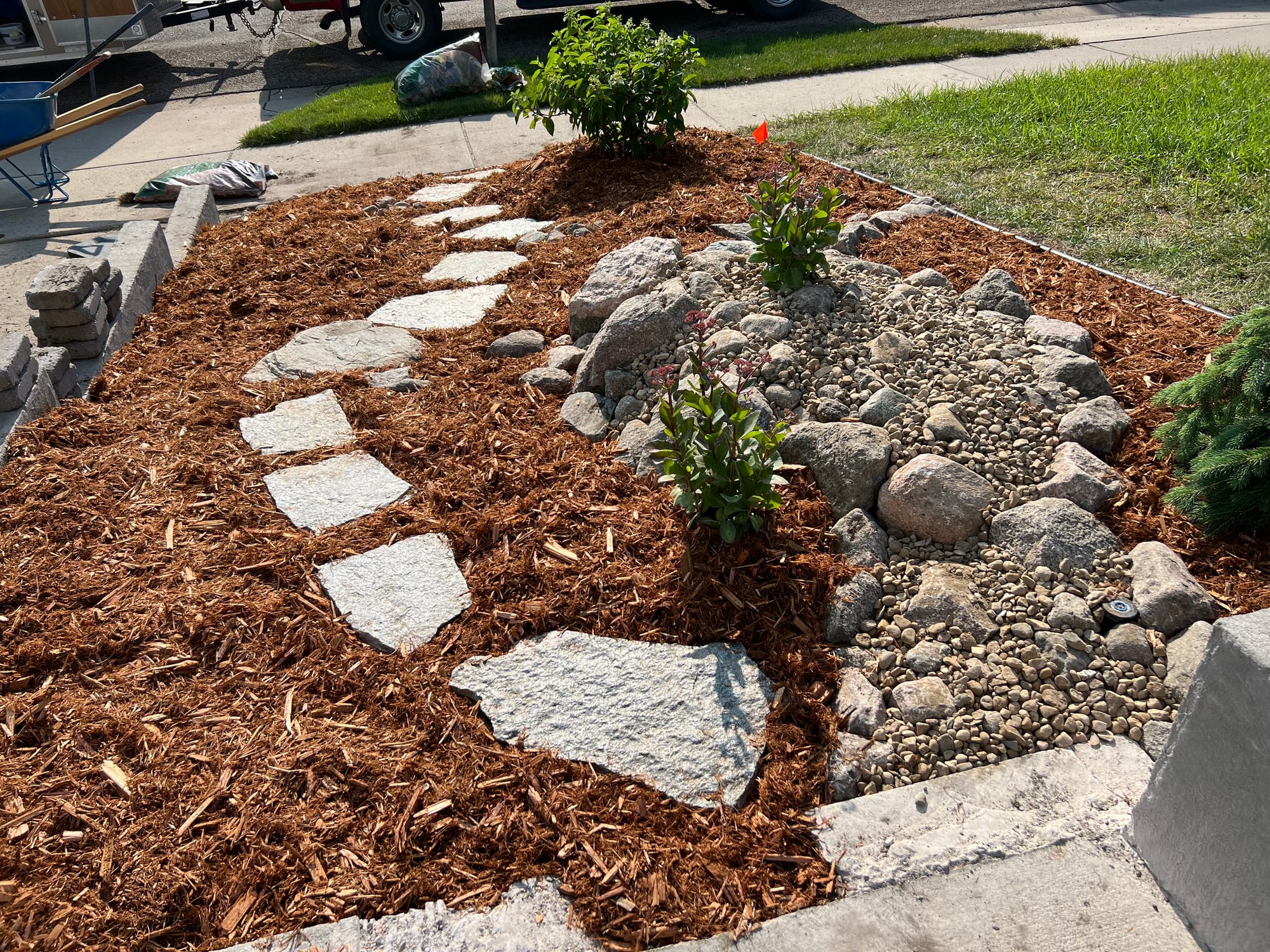
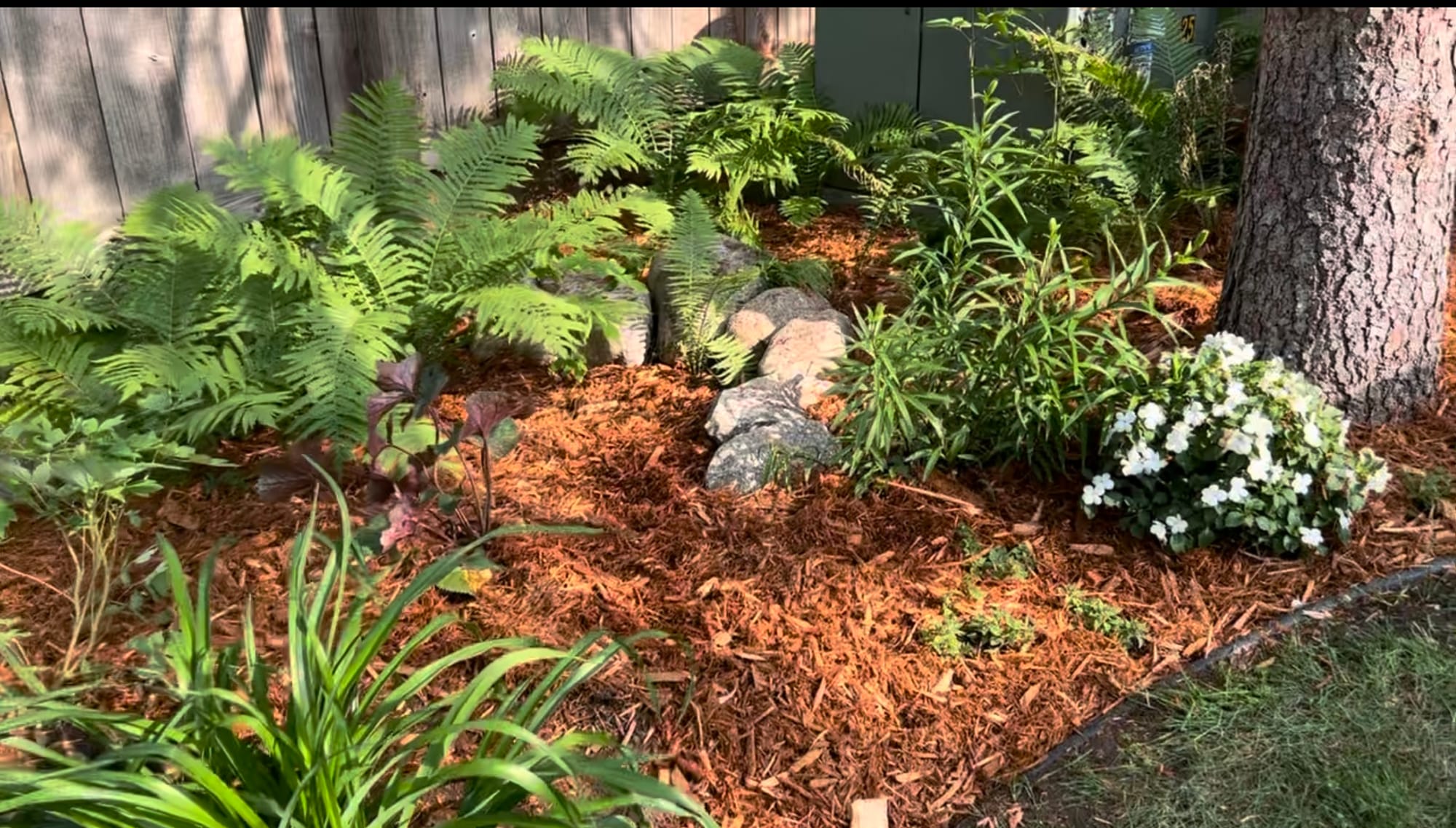
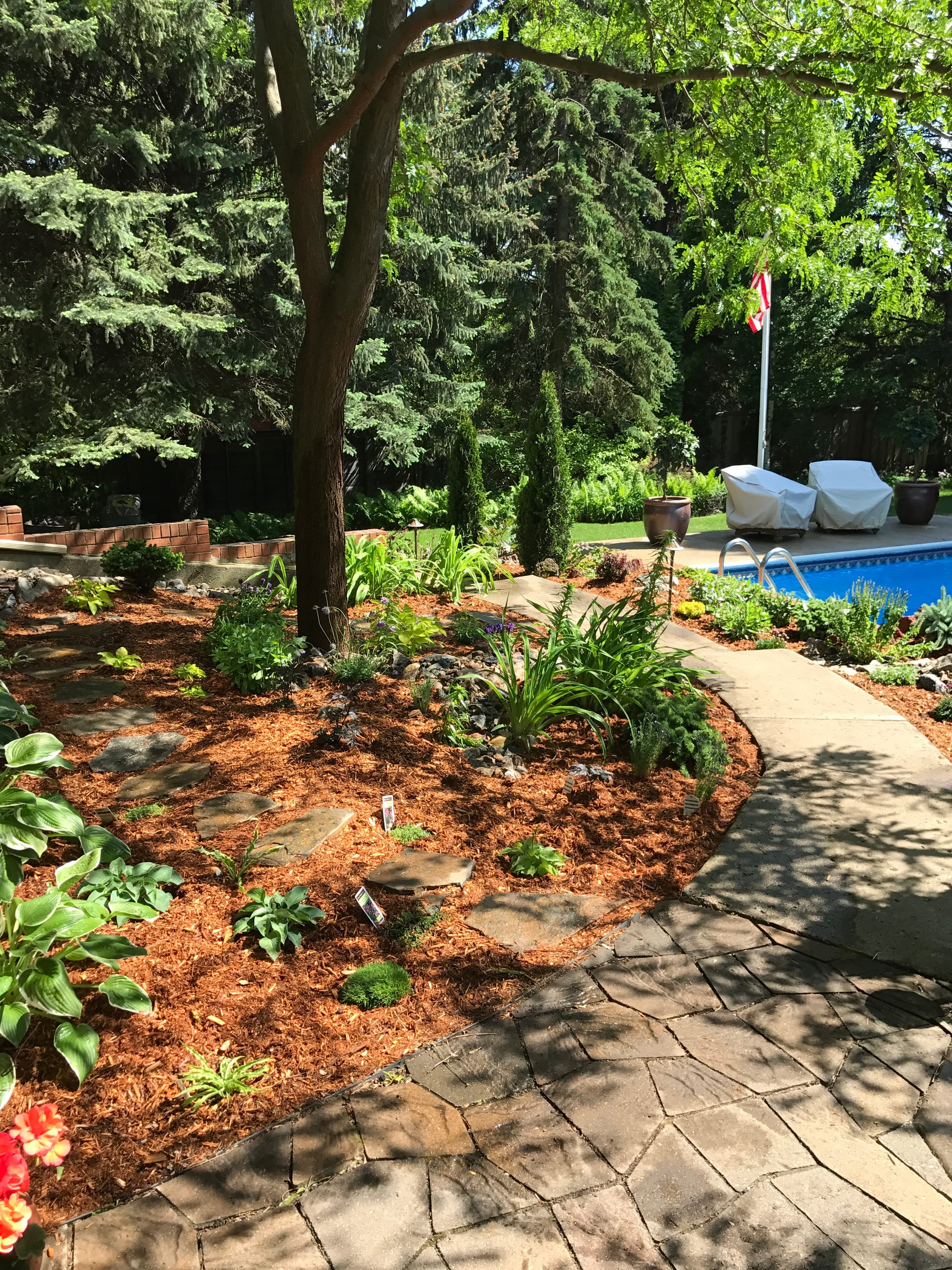
Fresh Mulch In Garden Beds
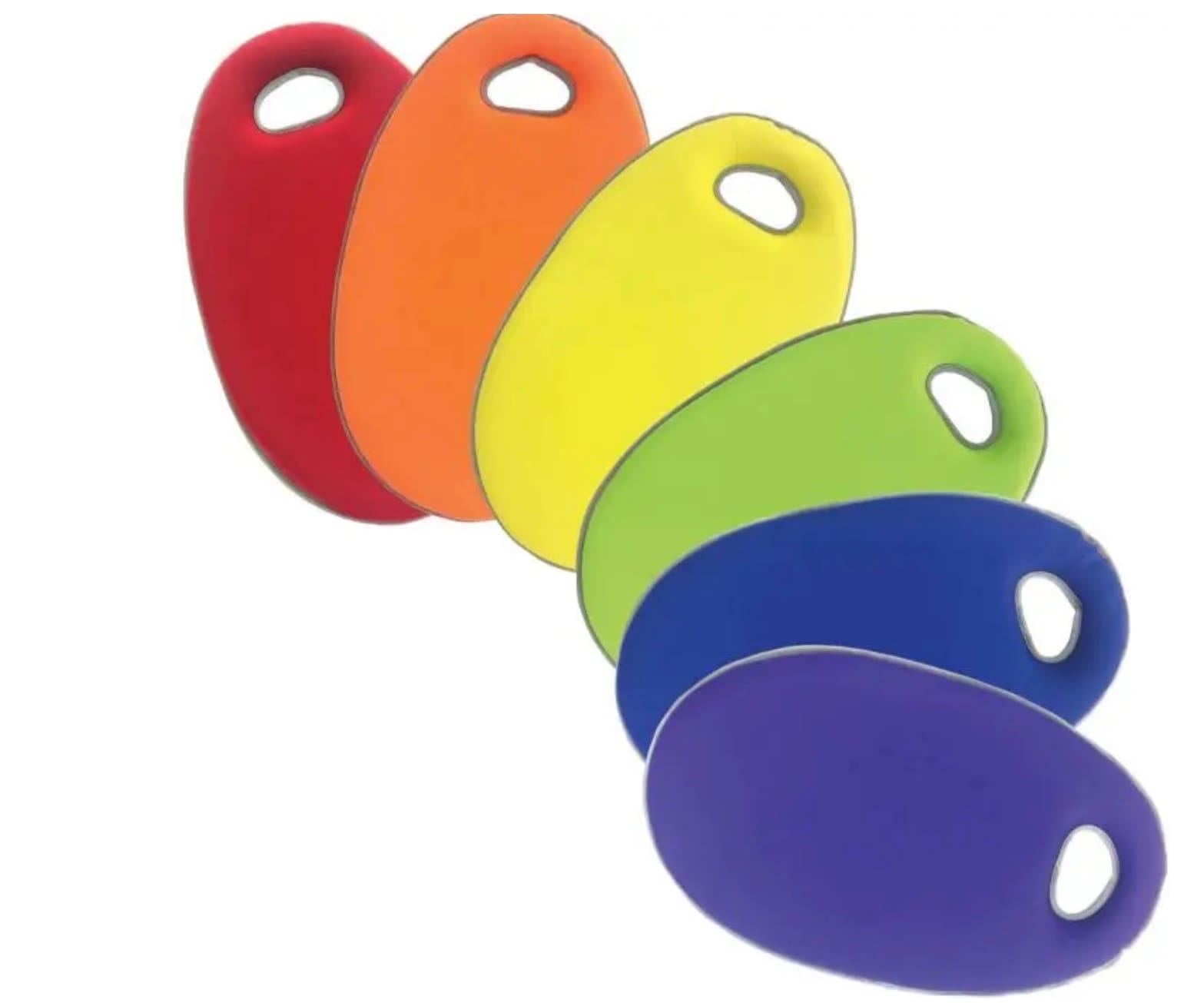
Memory Foam Kneeling Pads
Ultimate comfort with shock-absorbing memory foam core
Garden Hike is supported by its audience. When you purchase through links on this site, we may earn a small commission at no additional charge to you.
After fading, mulch can be "stirred up" to refresh the original color as the layer below the surface will maintain its color longer since it has been protected from the sun's intense rays.
Other than a fresh new look, here are a few other great reasons to use wood mulch in your gardens:
Weed suppression: Mulch blocks light, preventing most weeds from germinating.
Conserve moisture: Mulch will keep the sun from drying out your soil and avoid evaporation. I recommend keeping your mulch depth between 2 and 3 inches.
Organic matter: Mulch will naturally break down, adding nutrients and organic matter to your soil, leading to improved soil fertility for your plants
Soil Temperature: We don't usually think of soil temperatures, but mulch will help moderate the extremes in the cold winters and hot summers.
Below are photos and comments of some of the plants we covered in the video:
Mango Tango Potentilla, Potentilla fruticosa 'Mango Tango' (Zone 2-7)
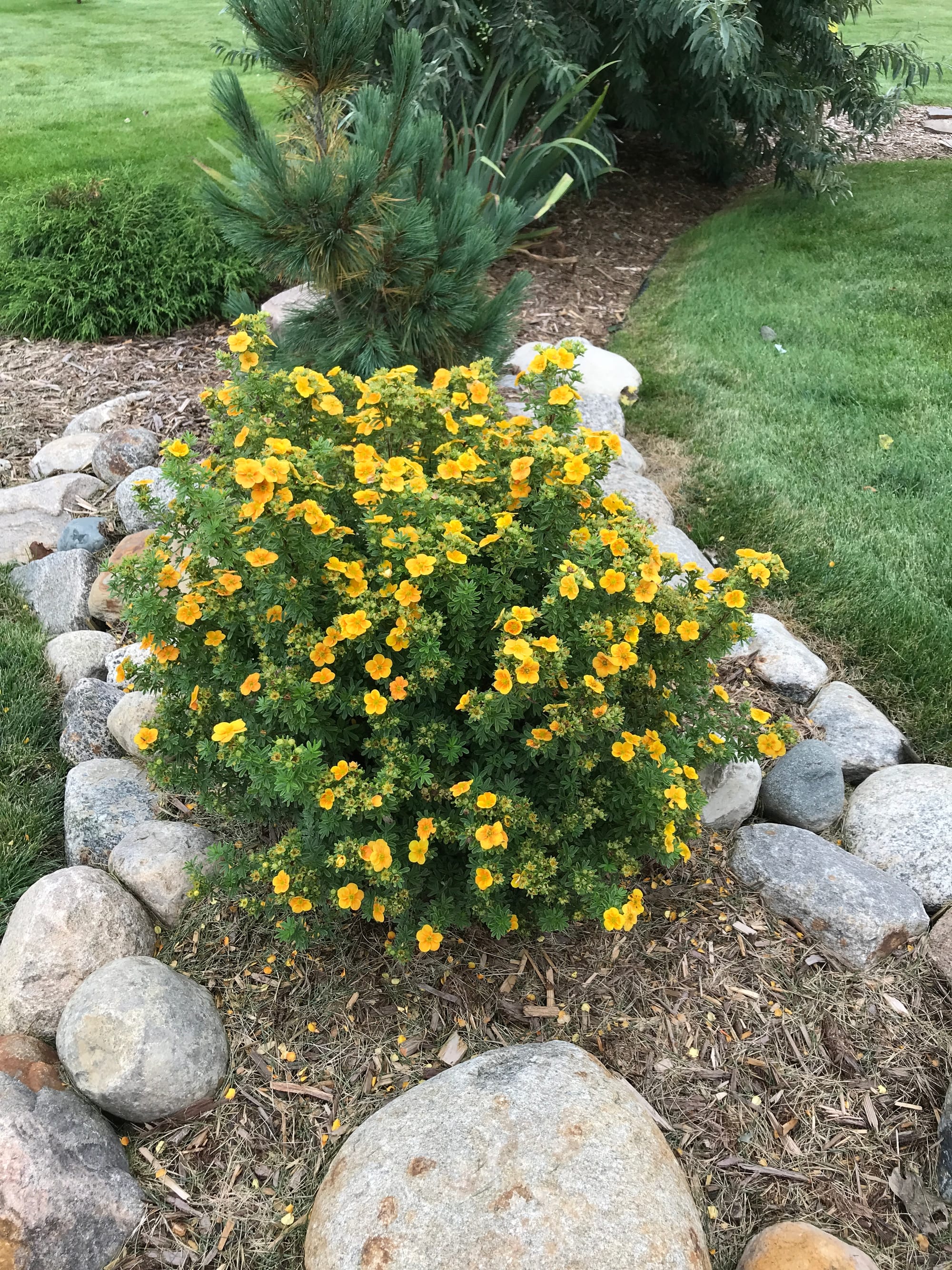
Potentillas are also called Cinquefoils. They are excellent cold-tolerant compact shrubs with a very long bloom period. Many varieties are available with different flower colors including yellows, whites, and pinks.
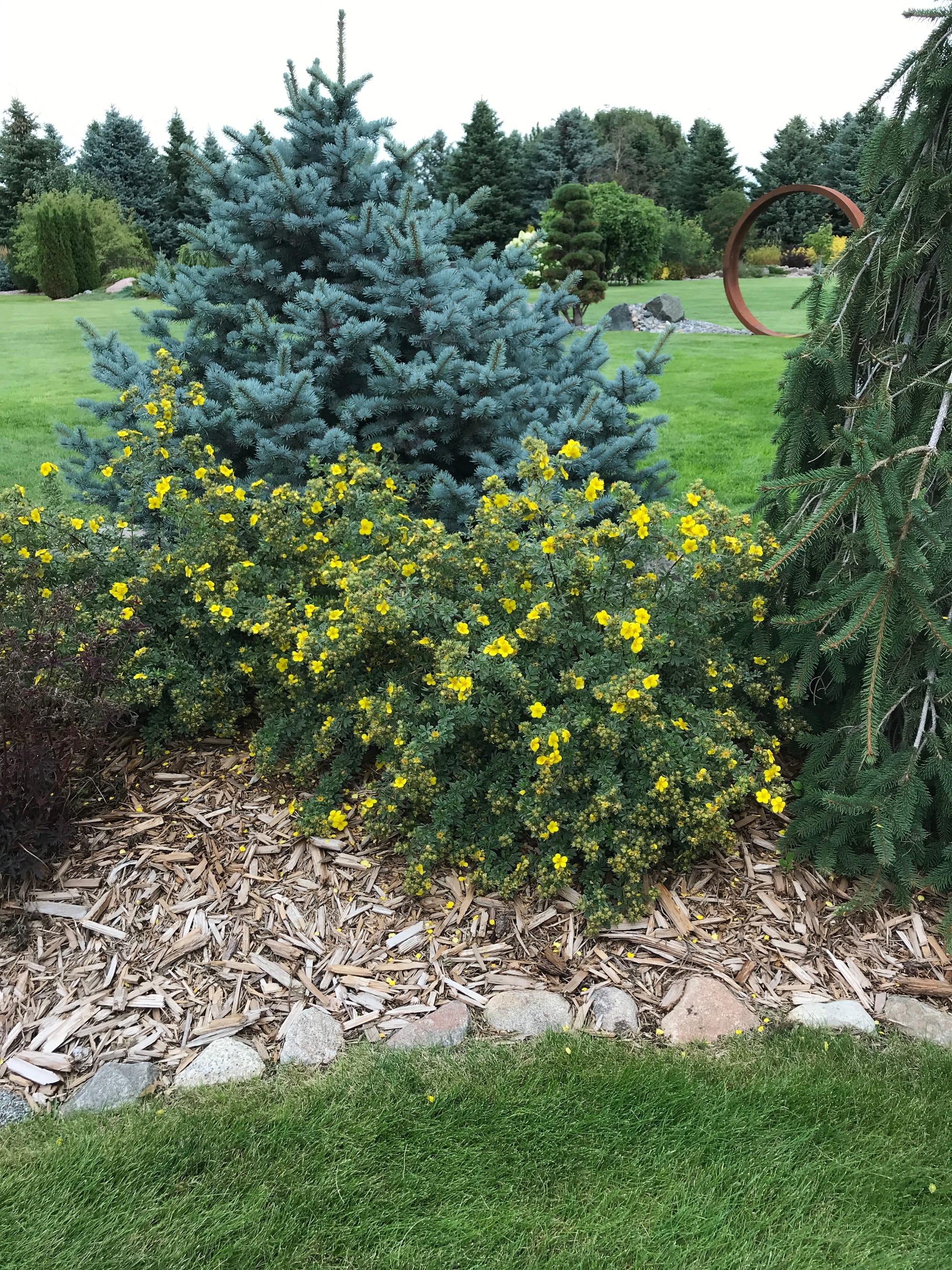
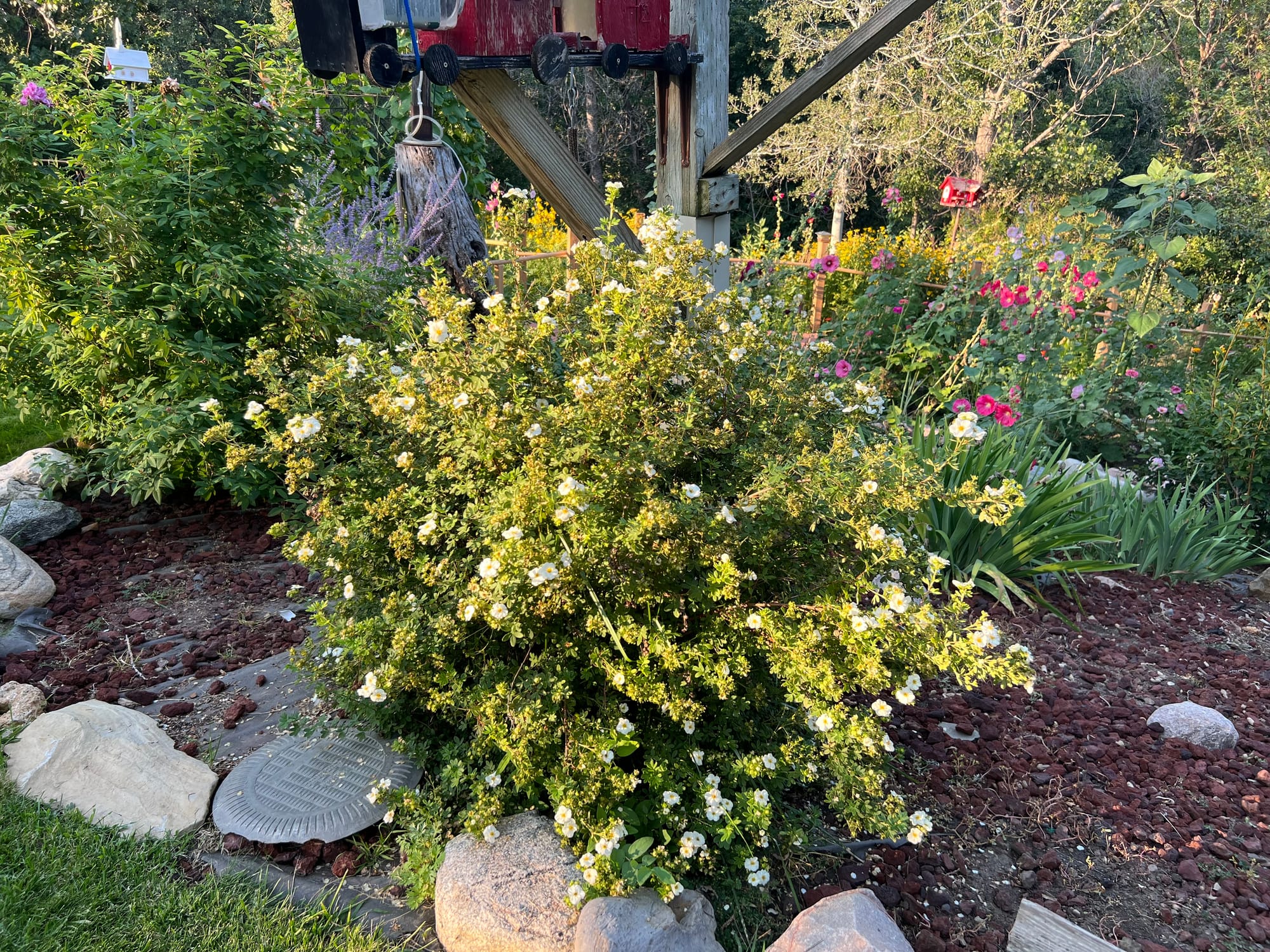
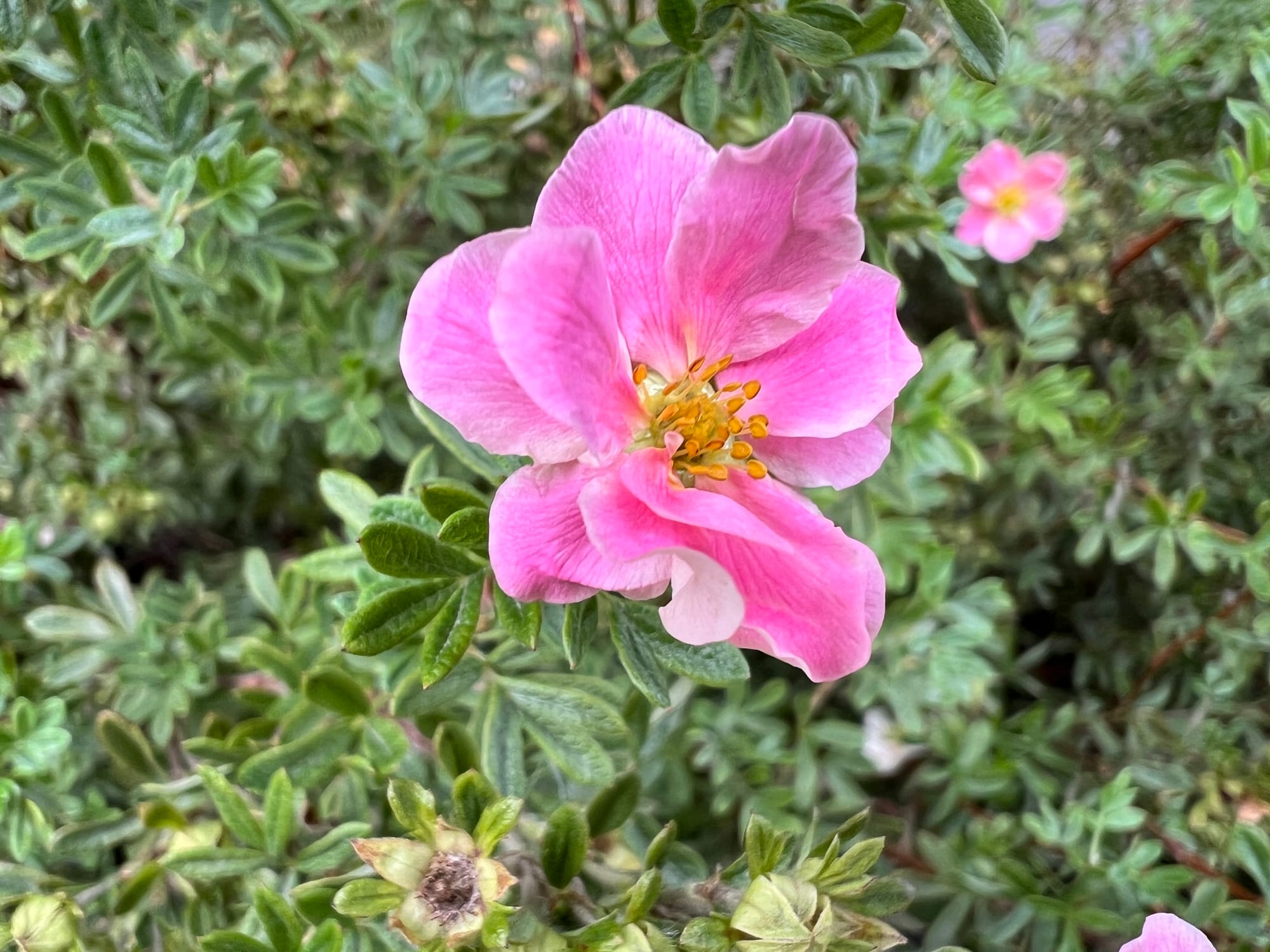
Yellow, White, And Pink Potentilla
Shear your potentillas every spring, or they can become leggy and will have less blooms. I usually take off 6-8 inches of growth every spring. This process will encourage new growth, keep your shrub in an excellent globe shape, and set the stage for an incredible amount of showy flowers.
Dakota Sunspot and Summer Dawn are two other favorite varieties. I have posted a couple of videos on pruning Potentillas on my YouTube channel here and here.
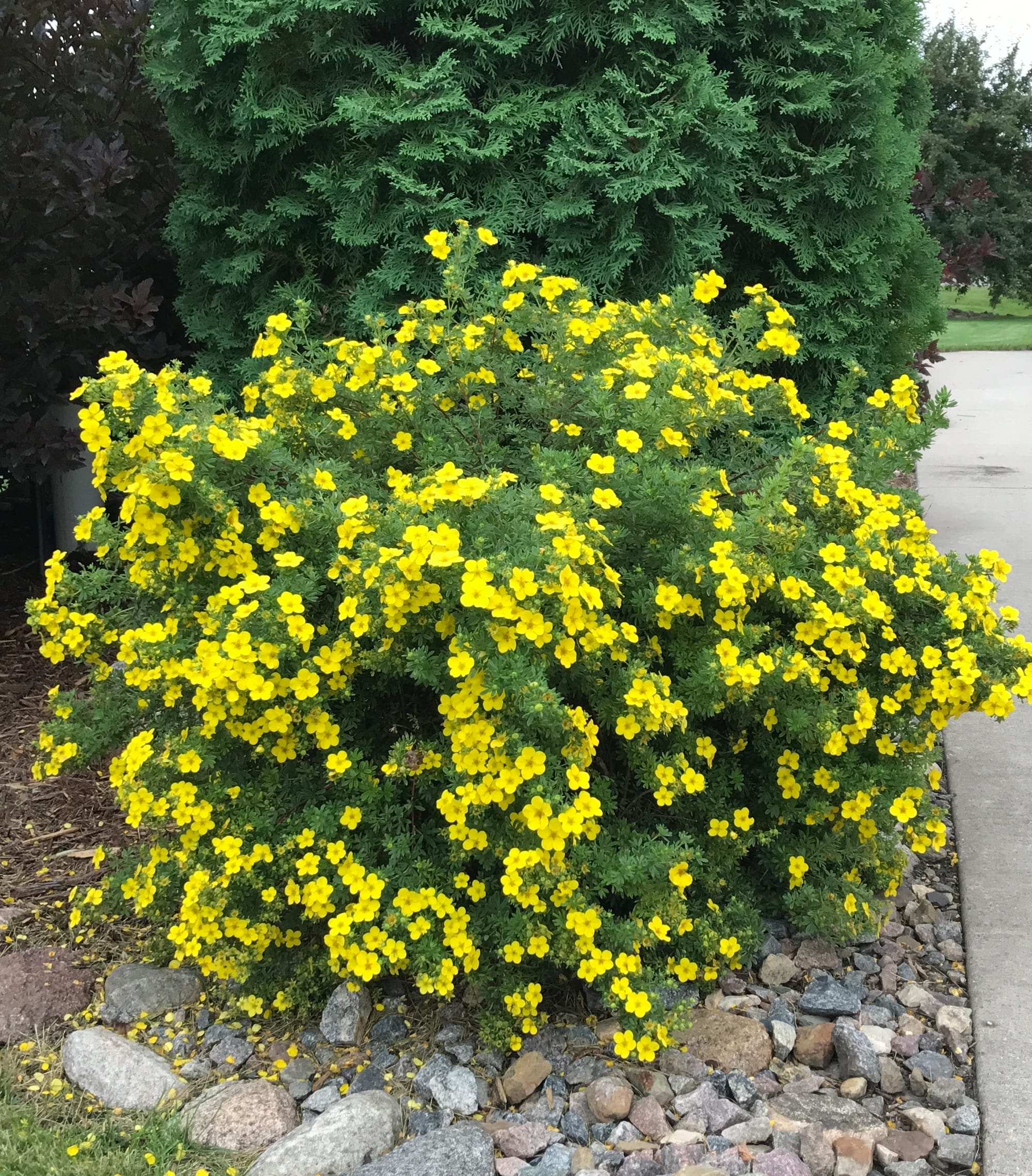
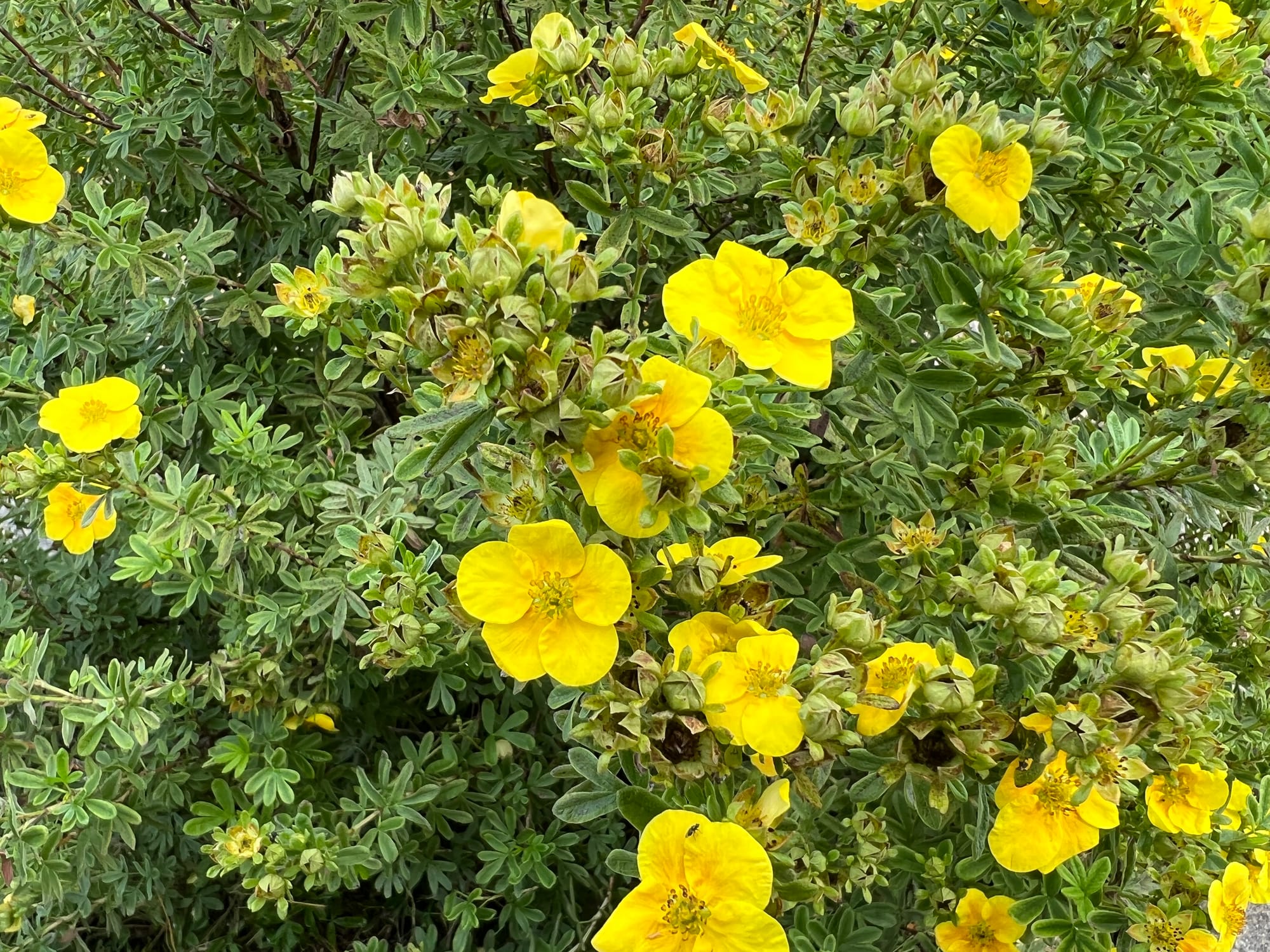
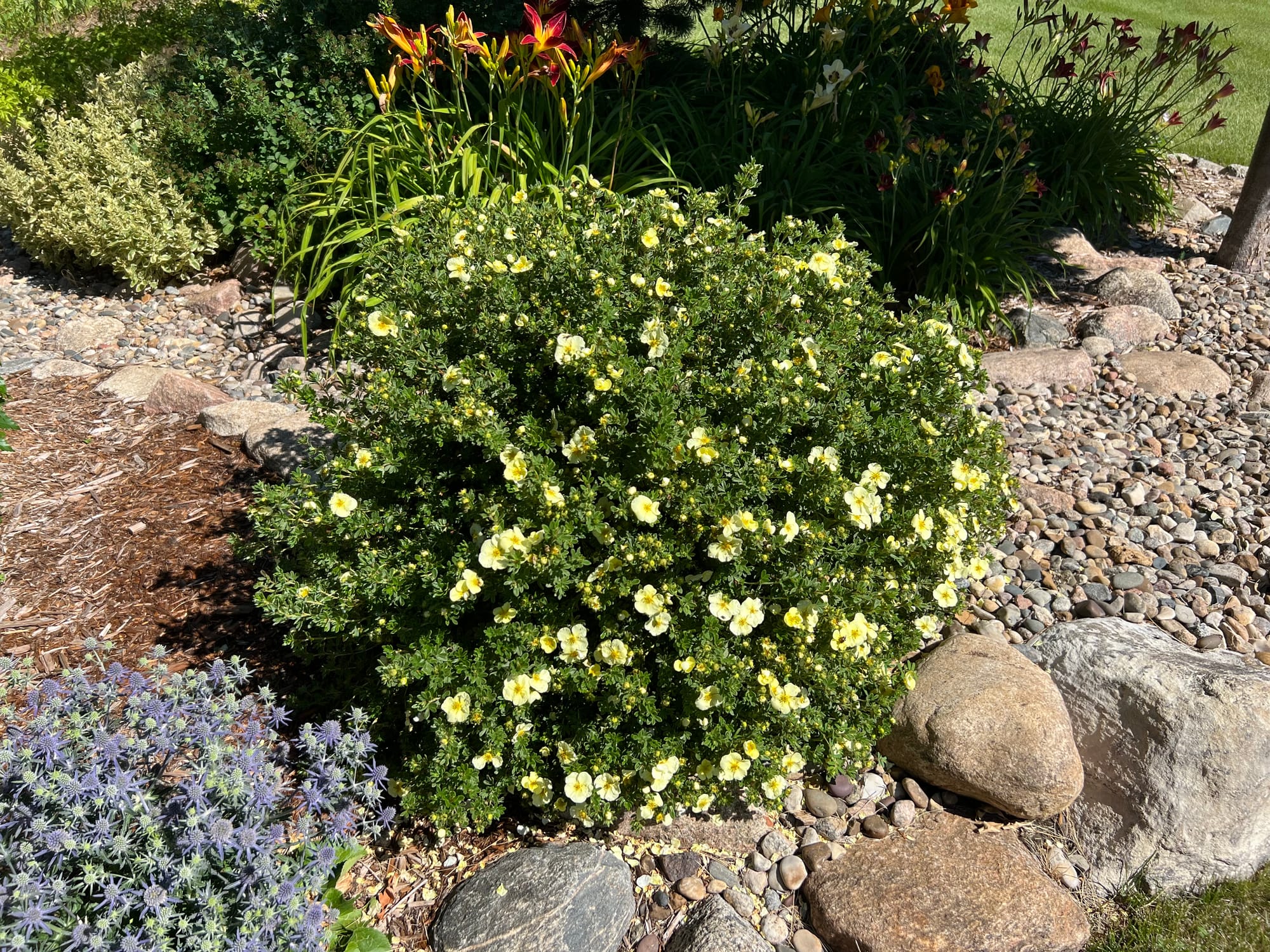
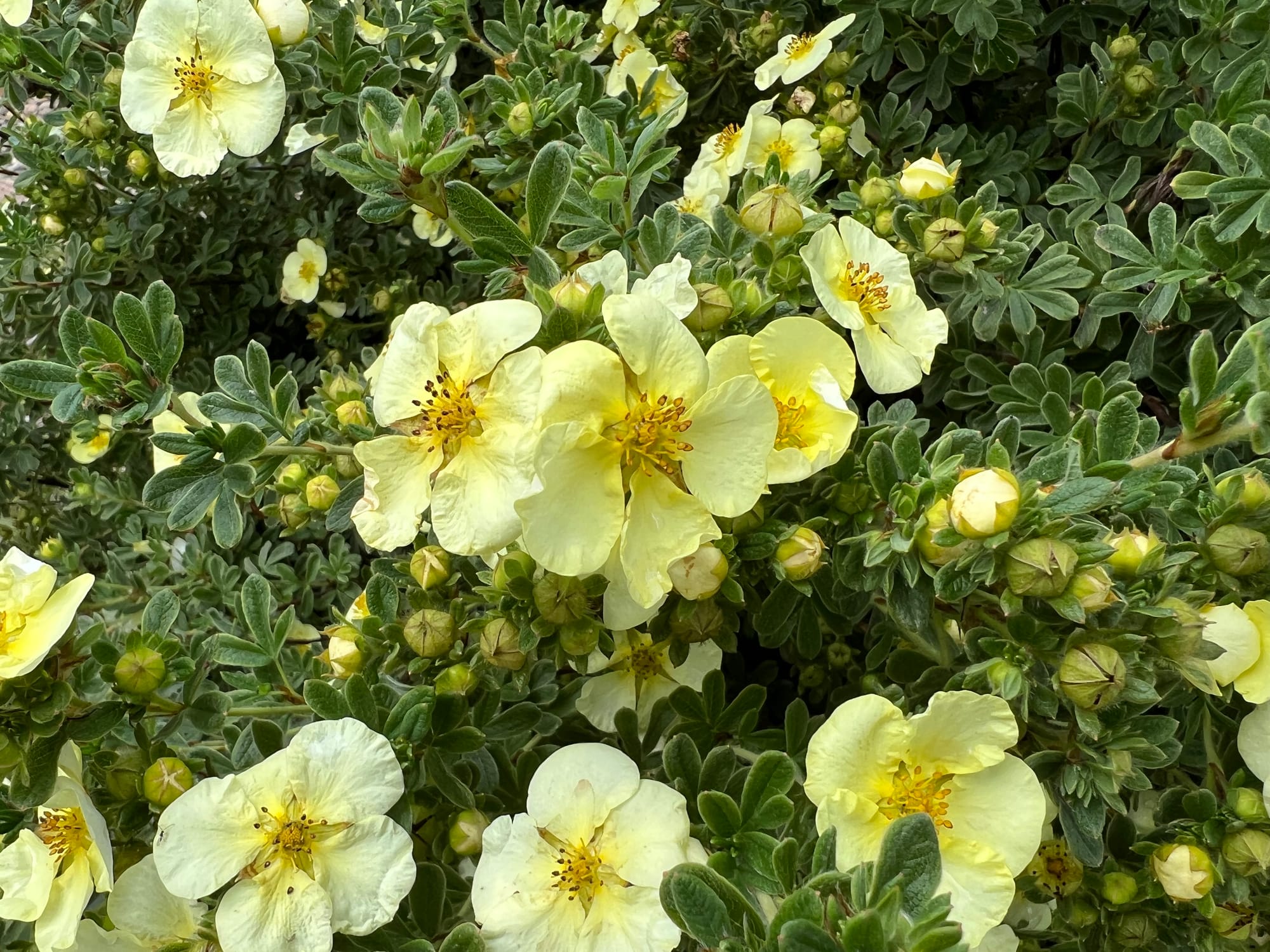
Dakota Sunspot Potentilla - Summer Dawn Potentilla
Trollguld Scots Pine, Pinus sylvestris 'Trollguld' (Zone 3)
So far, this variety has grown naturally in more of a globe shape but it will begin to form a broad upright pyramid as it ages, eventually reaching six feet tall and nine feet wide (I think I'm in trouble with the nine feet wide).
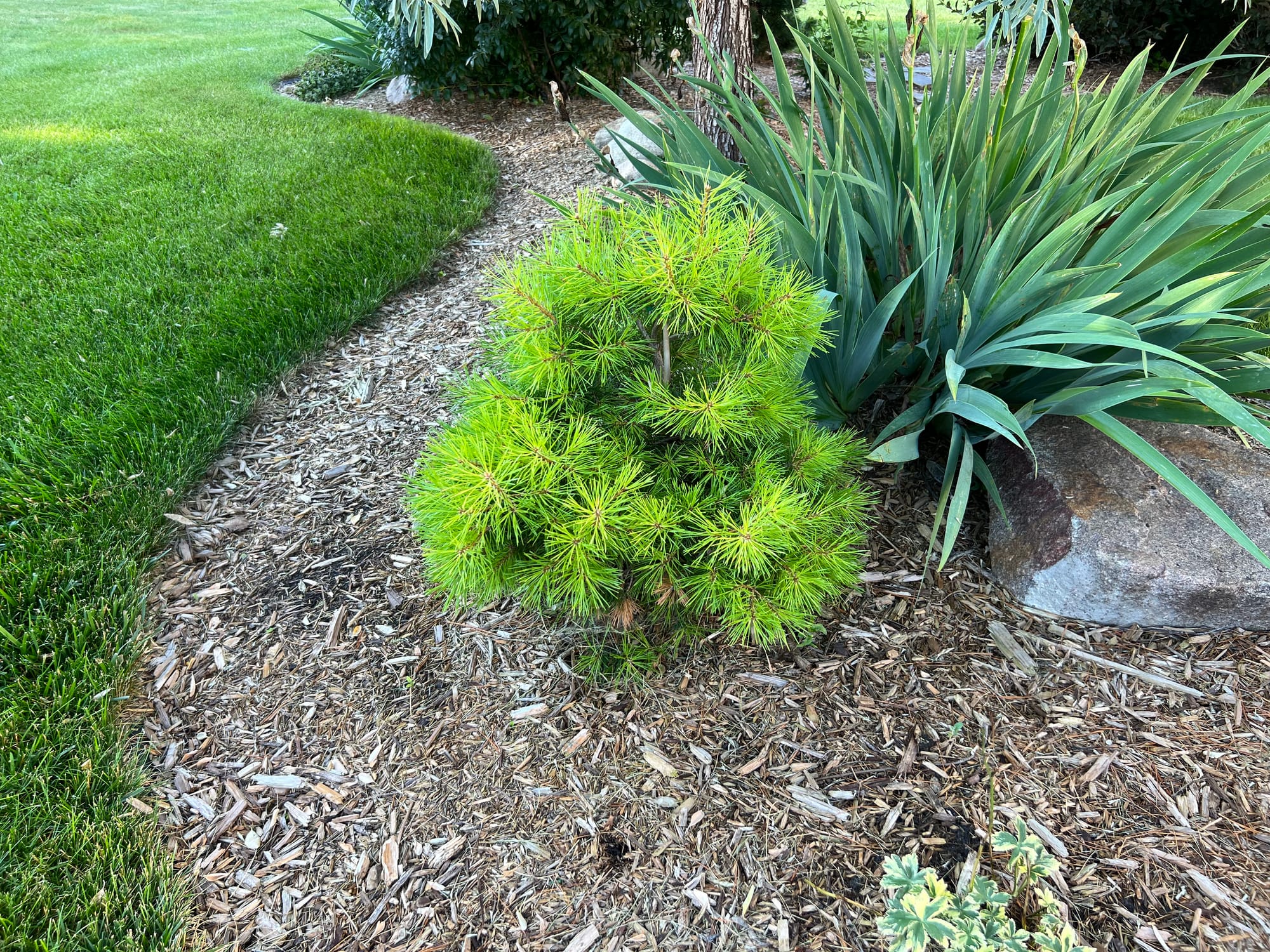
Silver Whispers Swiss Stone Pine, Pinus cembra 'Klein' (Zone 3-7)
The Swiss Stone Pines are relatively new to me. They were not discussed when I took my woody ornamental classes in college. I'm sure they were around but certainly less popular than other pines like the Ponderosa, Austrian, Mugo, and Scotch.
Due to the neutral to higher pH in the northern Great Plains, many pines will not grow here as they need a more acidic soil. White Pine and Red Pine are examples of this, and they thrive in acidic soils about 250 miles east of my area.
The Swiss Stones have a shorter soft needle, and varieties available are predominately tight upright plants. Swiss stones are an excellent pine for the prairie states as they tolerate cold winters and wind.
I am experiencing tip burn on two of the varieties I am growing, and I am pretty sure that it is due to the well water used to irrigate our lawn, which is high in minerals and salts. I did a winter video showing several Swiss Stone varieties and a have a blog article highlighting several of these "new" pines.
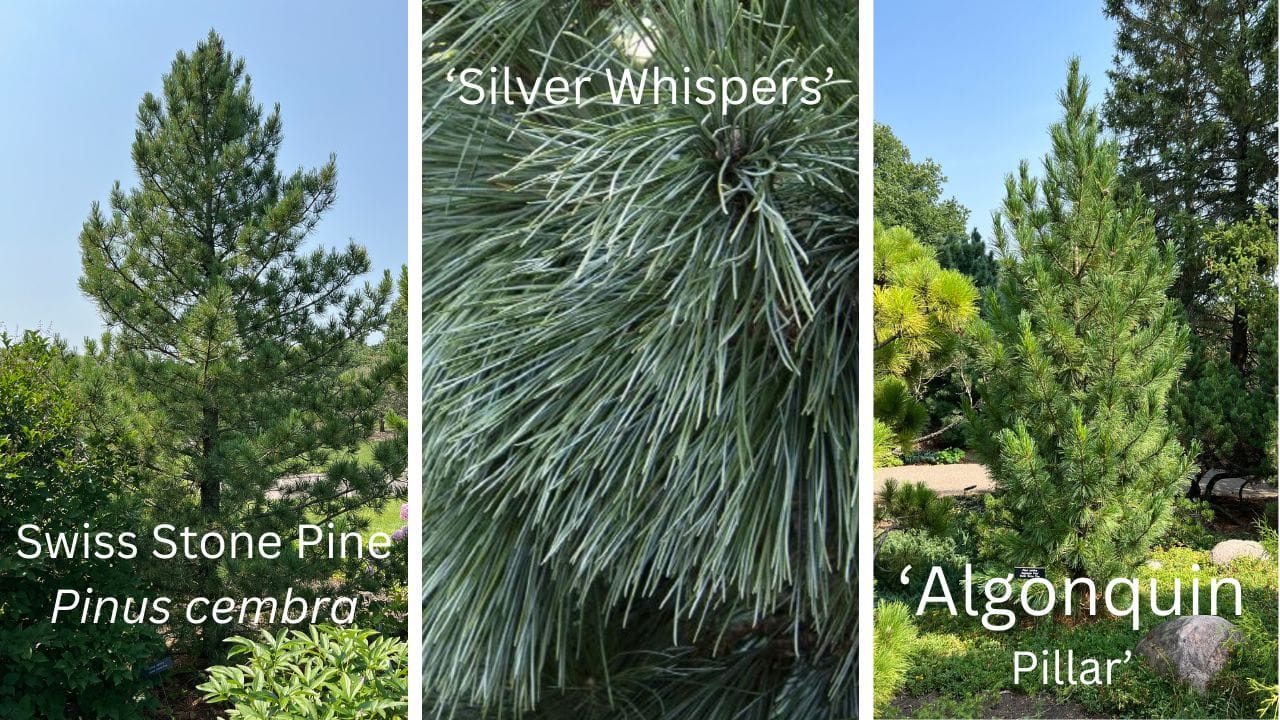
Iris
Old Iris rhizomes will no longer bloom, so dividing them for best flowering is necessary. Here's a blog article discussing that process. It is a favorite flower of mine in the spring, but it has a short bloom period. There are many excellent varieties with various colors to choose from.
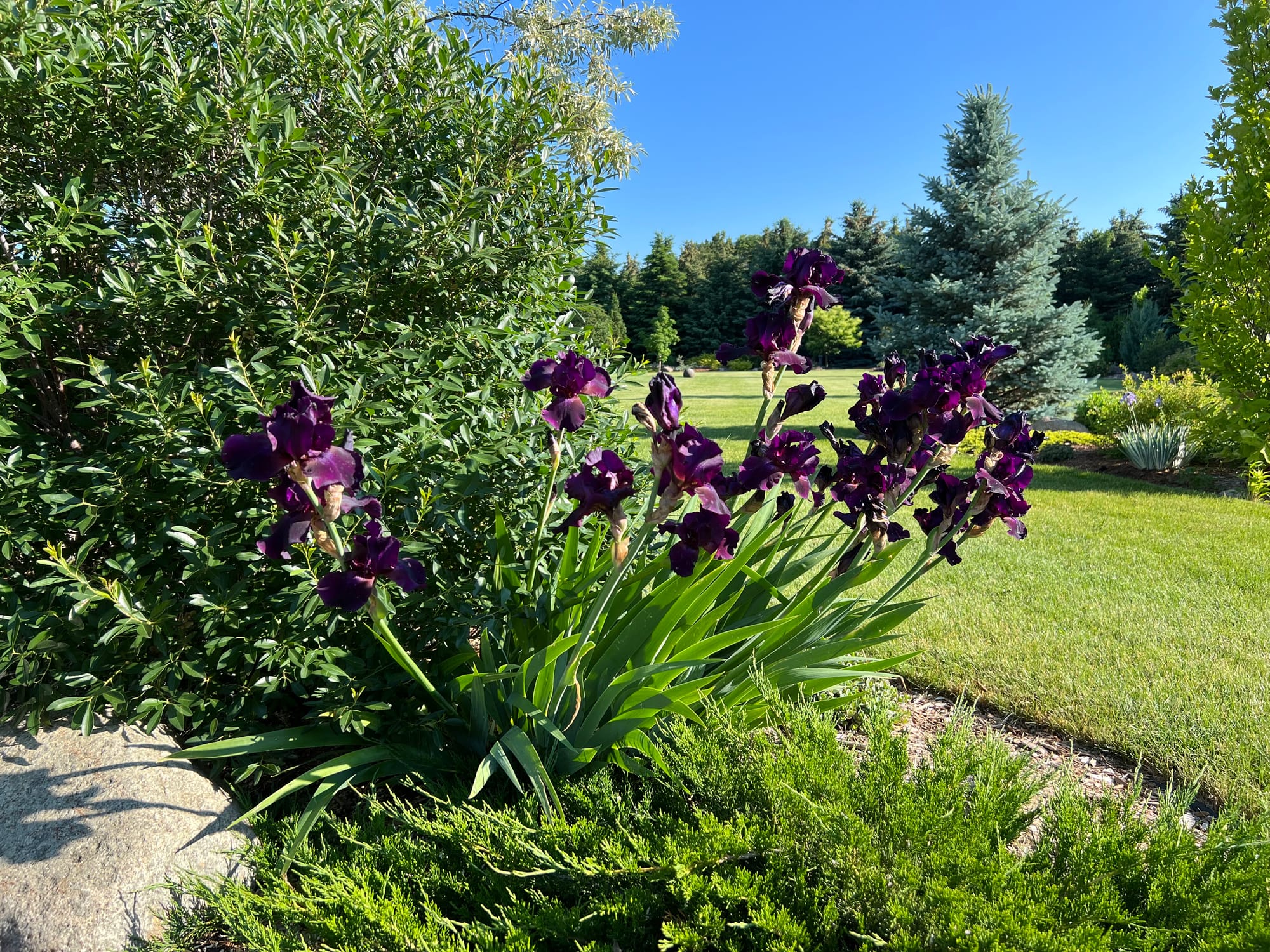
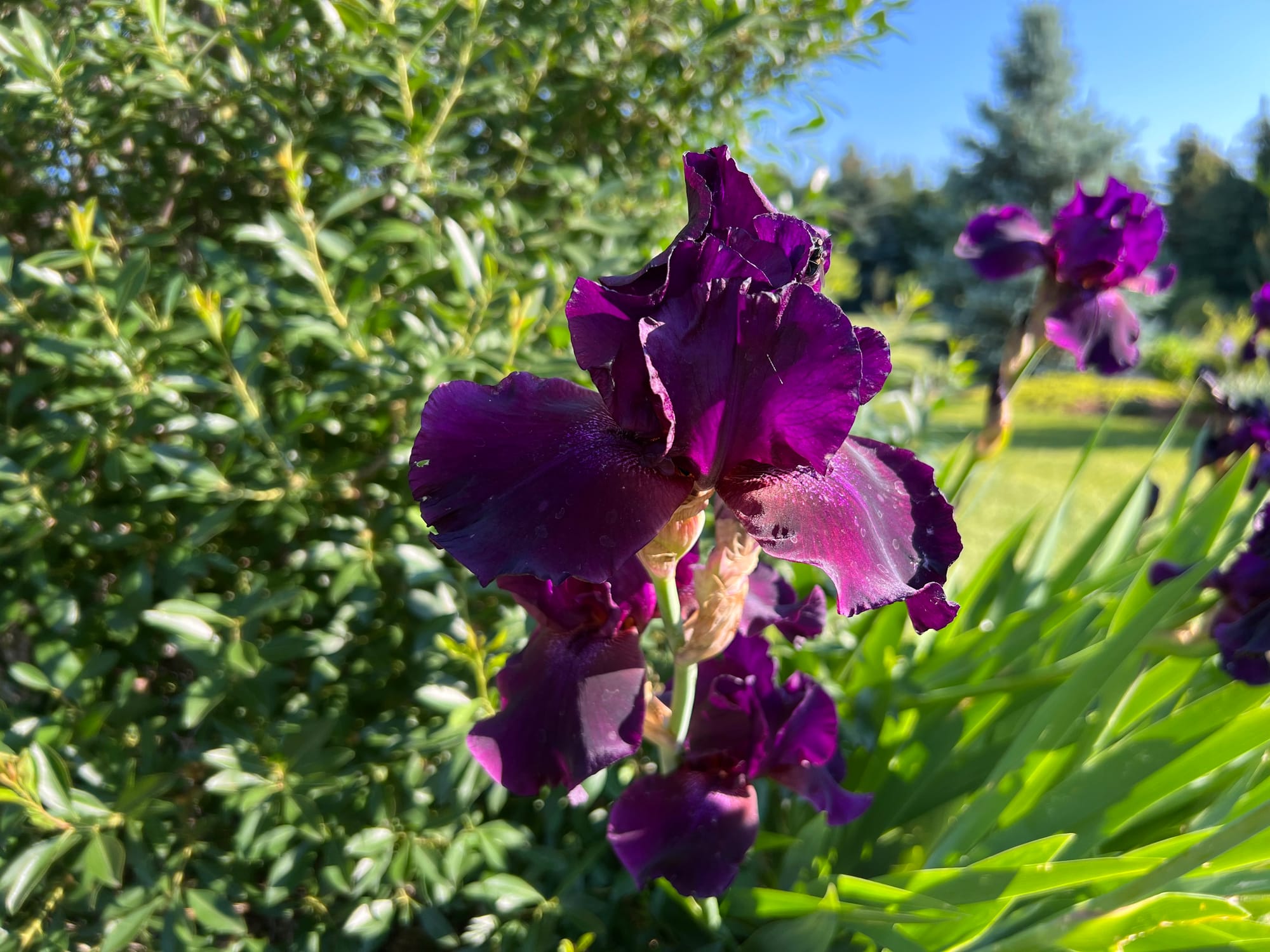
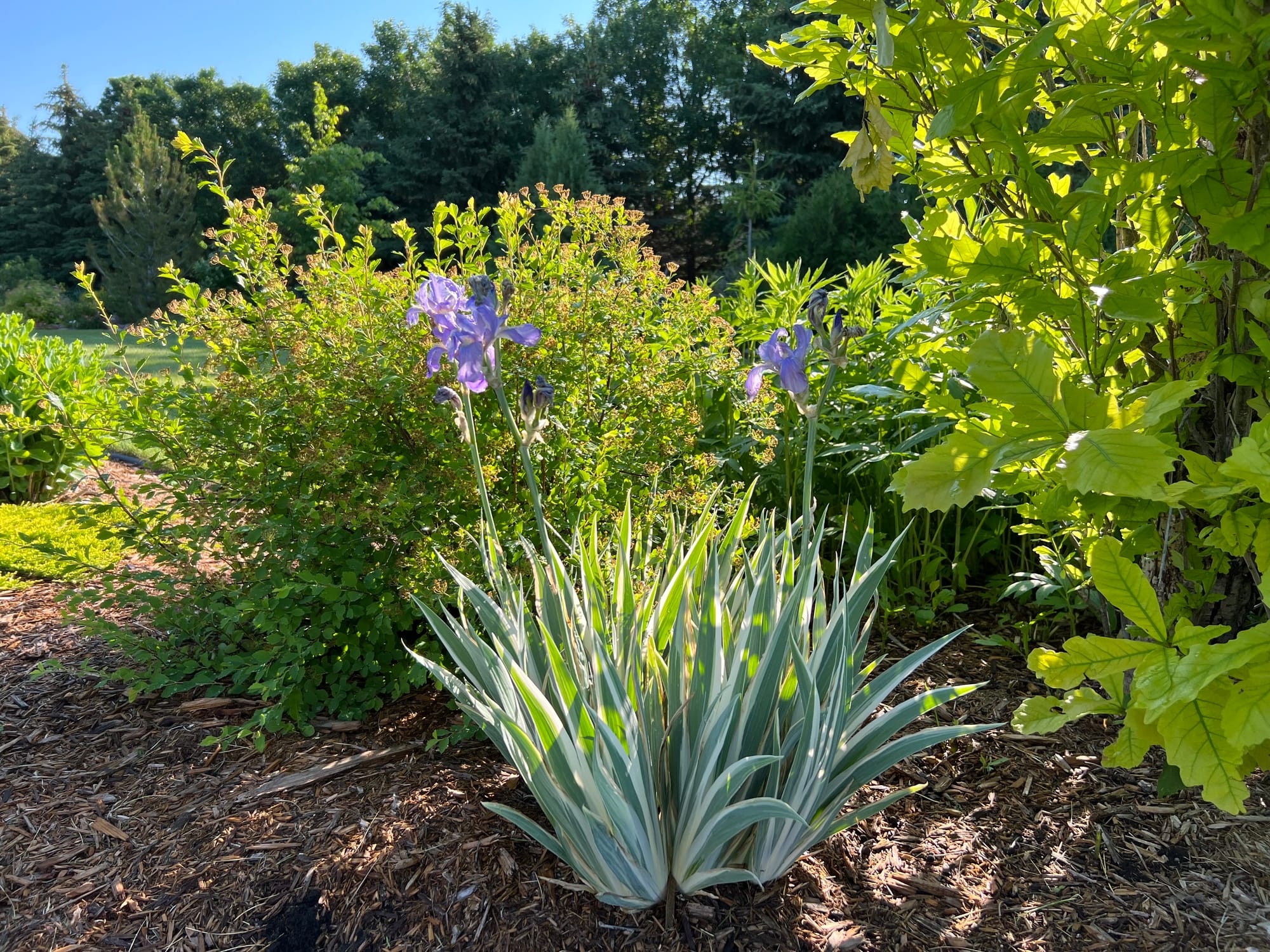
Bearded Iris
Russian Olive, Elaeagnus angustifolia, (Zone 2-7)
Even though the Russian Olive is considered invasive in some areas, I like this tree. The silver foliage contrasts other plants in the landscape nicely, and the plentiful "olives" are an excellent food source for the birds and squirrels. It does have very sharp thorns! So, be careful in that regard. This tree will survive in some of the coldest conditions and poor soils that you can throw at it. It will, though, tend to look "scrappy" under prolonged harsh conditions. When given ample moisture and nutrients, it is a gorgeous tree.
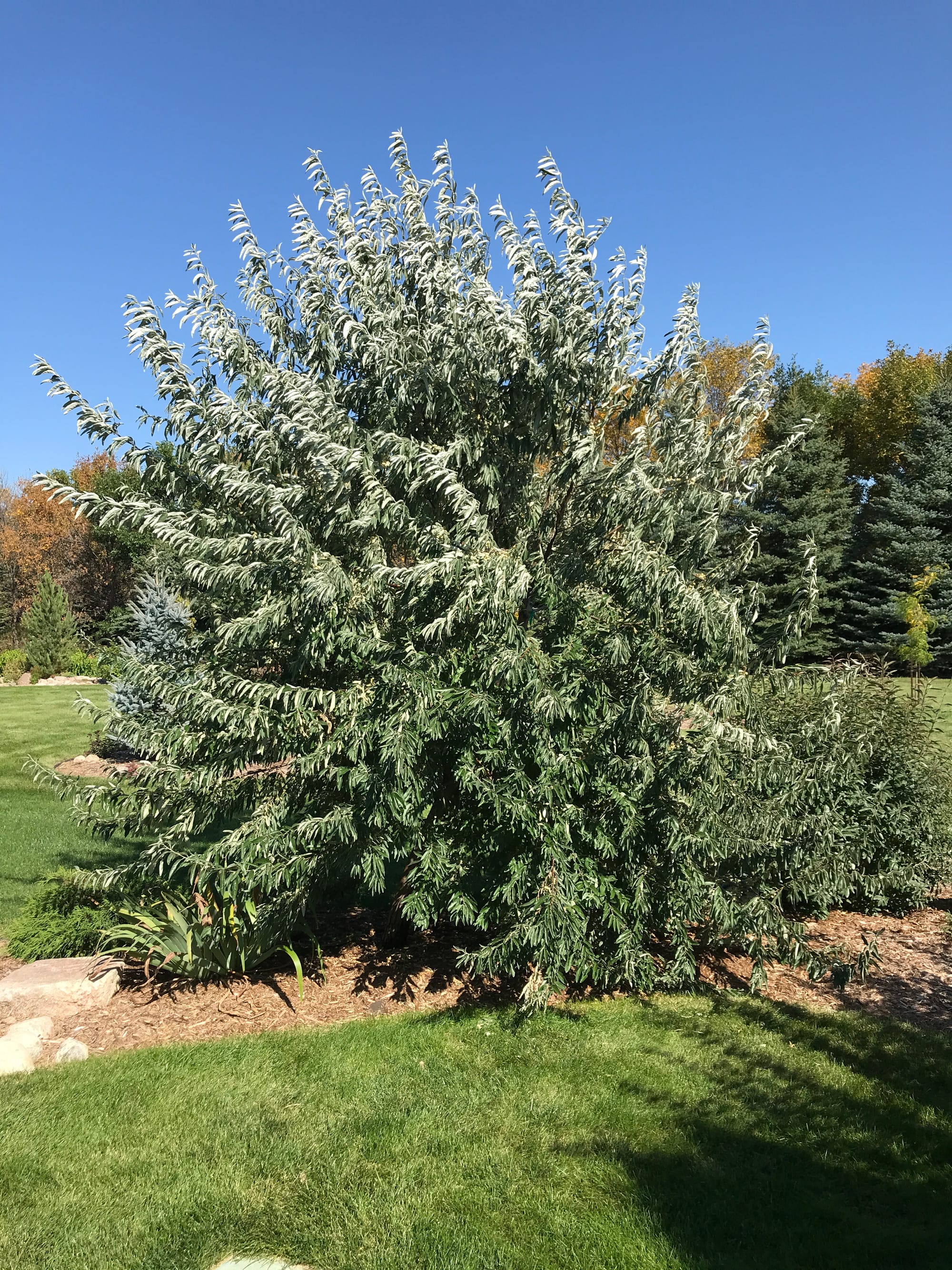
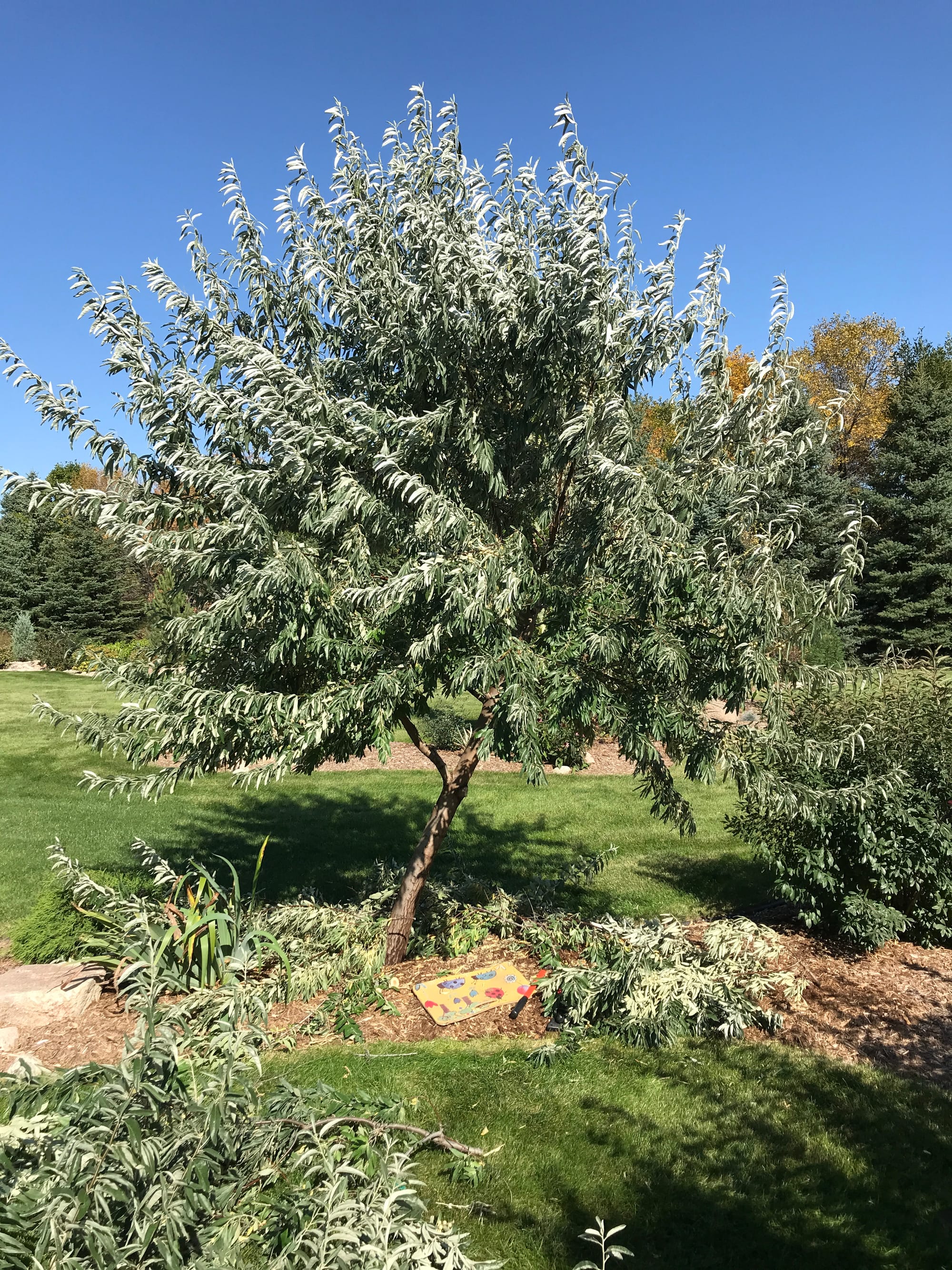
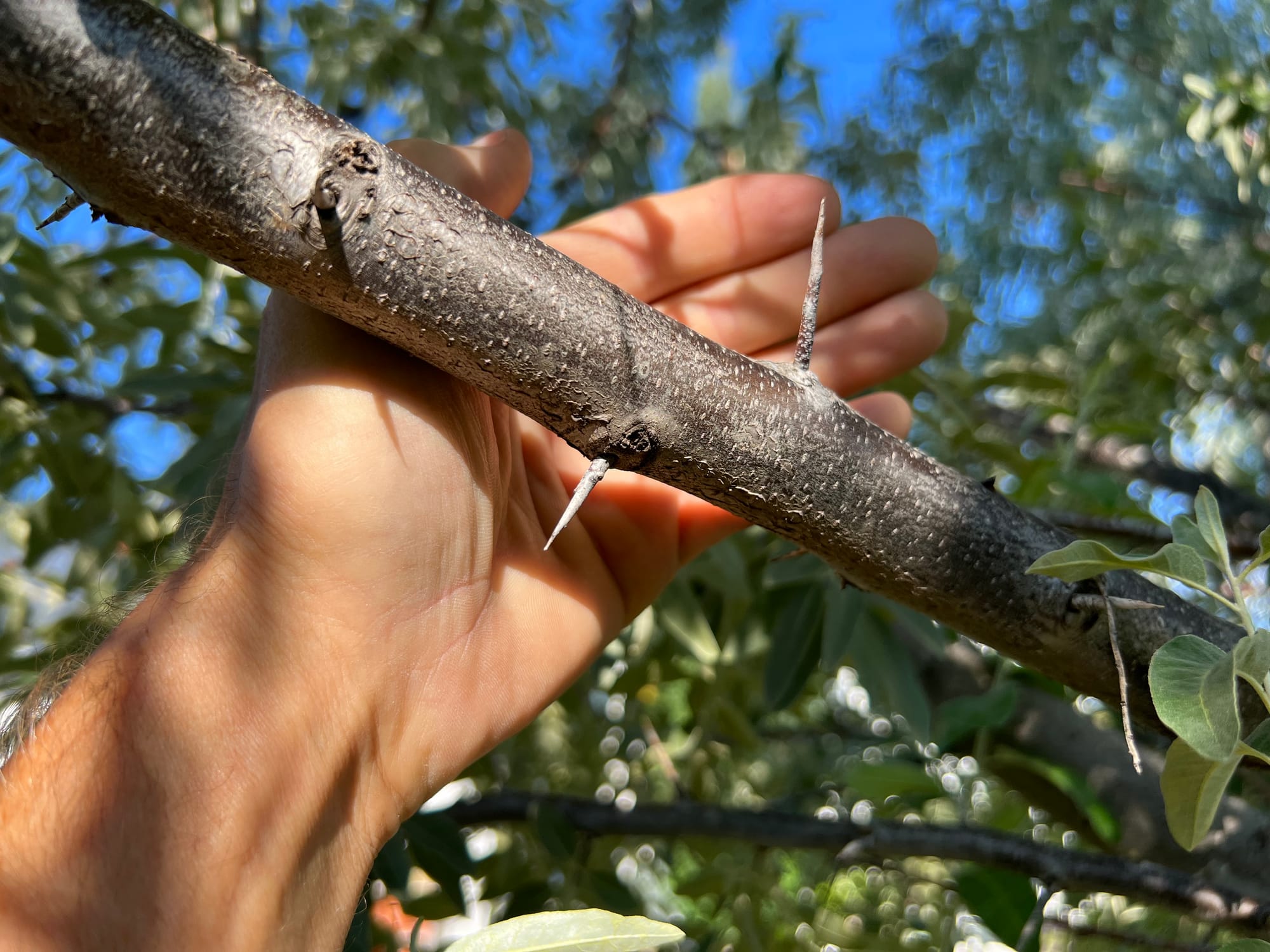
Russian Olive Before And After Pruning Up Lower Branches - Thorns
Dwarf Russian Almond, Prunus tenella, (Zone 2)
The Dwarf Russian Almond is similar to the Pink Flowering Almond (Prunus glandulosa 'Rosea Plena'. I always assumed they were the same plant with two different common names, but they are separate species. I hope to come across both varieties at a garden center at some point to compare the differences. The spring blooms are the best reason to grow this beautiful shrub. However, it is also an excellent choice where hardiness is required.
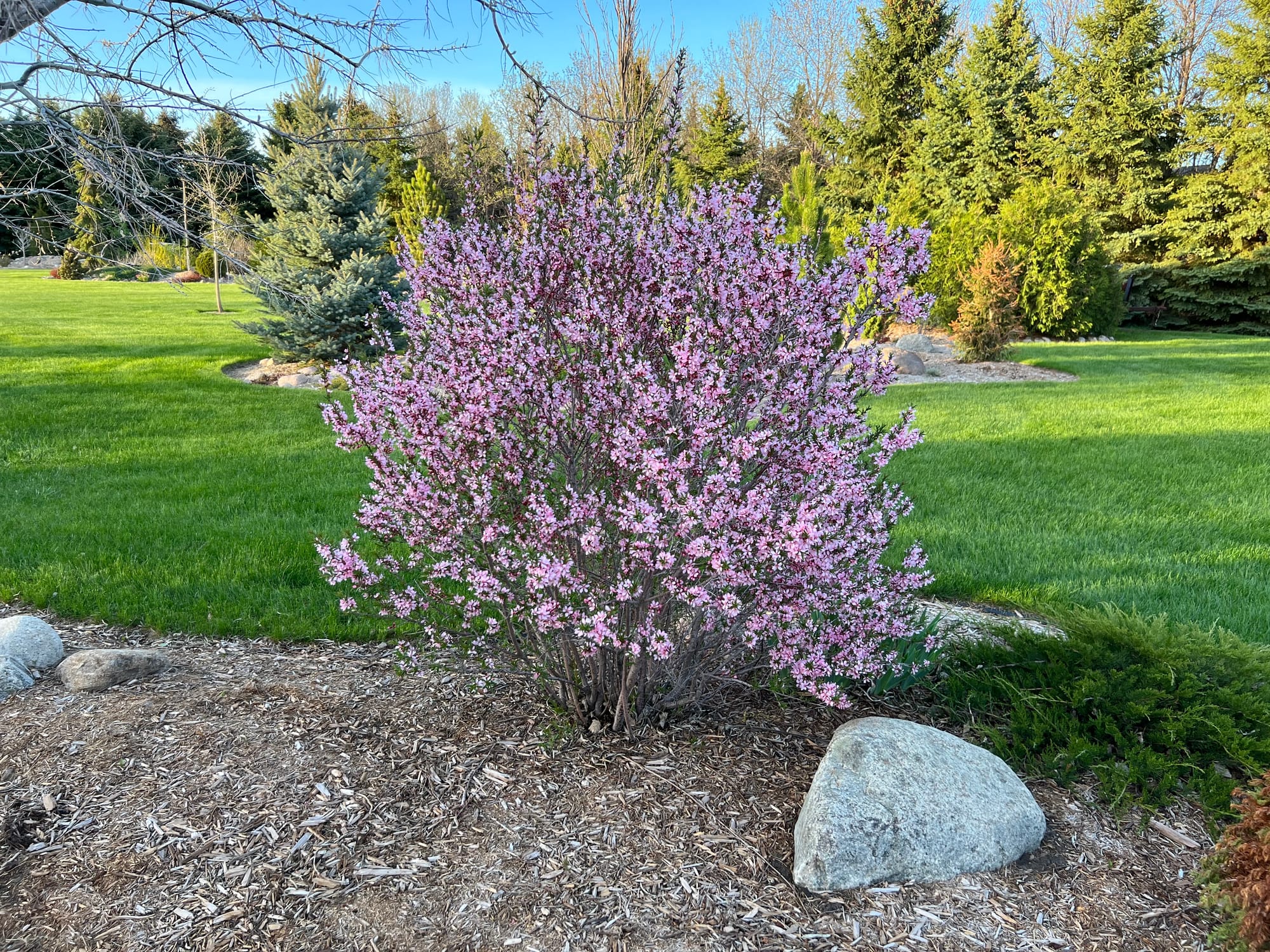
Hyland Splendor Mugo Pine, Pinus mugo 'Hydak' (Zone 3-7)
Royal Splendor Mugo Pine is an excellent upright Mugo Pine variety. It grows about 20% faster than the more common Tannenbaum and has a richer green color. This pine is an introduction from North Dakota State University, where I received my Horticulture education. I worked at the NDSU Research Arboretum for one summer season directly after graduating; perhaps I mowed around it occasionally. Anyway, that's about all I had to do with it. 😊
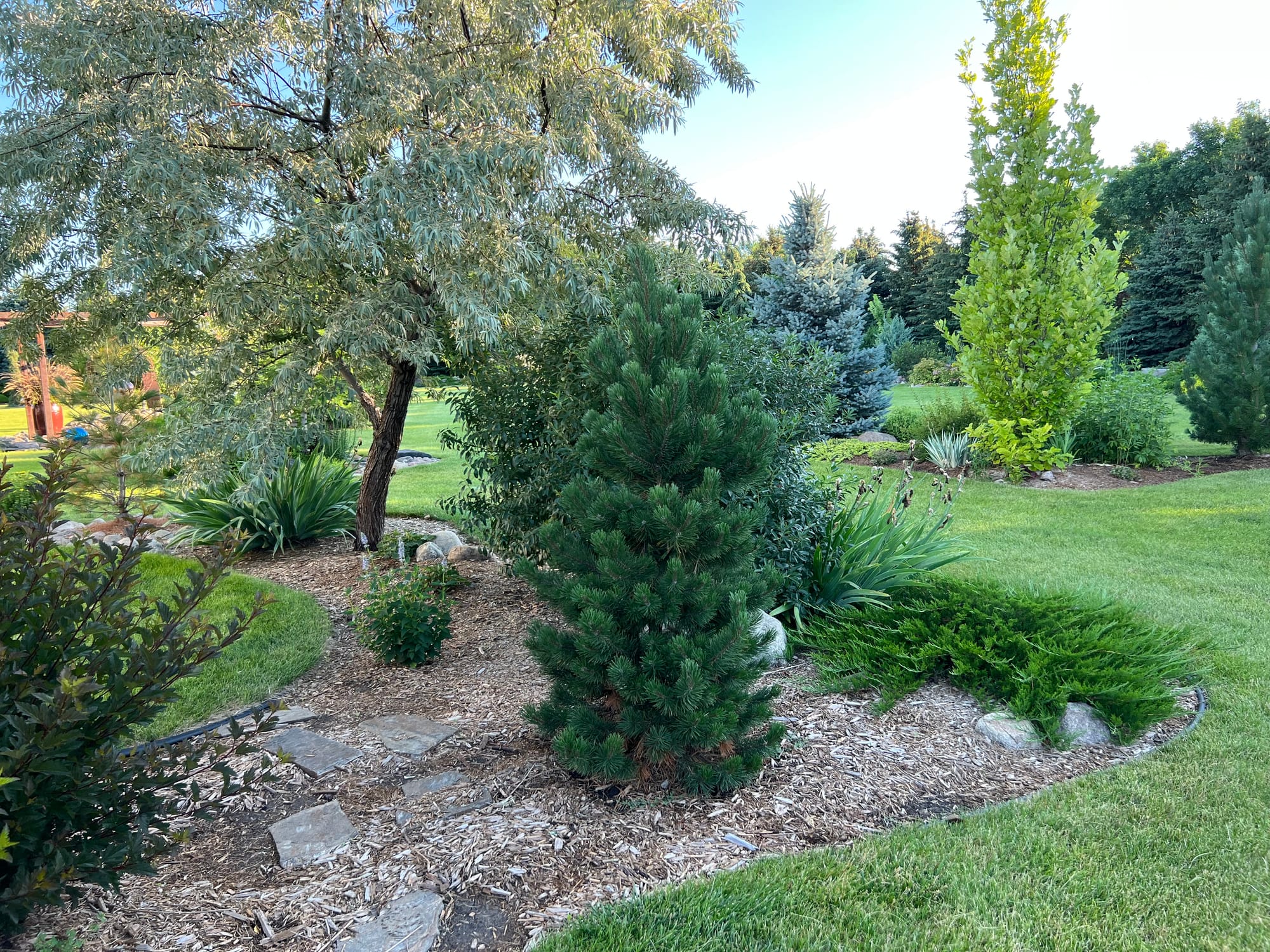
Thanks for stopping by Garden Hike!
Kevin
A.M. Leonard has an excellent selection of tools and gardening supplies! Enter discount code GARDENHIKE10 when checking out to receive 10% off any order. Click the banner below to enter their online store.

Garden Hike is supported by its audience. When you purchase through links on this site, we may earn a small commission at no additional charge to you.
